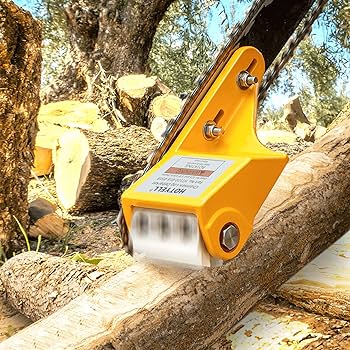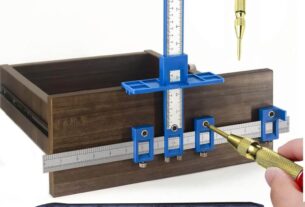If you’re a woodworker, logger, or just someone who loves to work with trees, then you know how important it is to have the right tools on hand. And one of the most essential tools for processing logs is a debarking tool.
A log debarking tool is exactly what it sounds like – a tool used to remove the bark from logs. This might not seem like a big deal, but removing bark can make your logs easier to work with and extend their lifespan.
But with so many different types of debarking tools out there, how do you know which one is right for you? In this guide, we’ll cover everything you need to know about choosing and using a log debarking tool.
Types of Log Debarking Tools
There are several different types of log debarking tools available on the market today. Here are some of the most common:
1. Drawknife
A drawknife is a traditional woodworking tool that’s been used for centuries. It consists of a blade and two handles on either end. You use the drawknife by pulling it toward yourself along the surface of the log.
One advantage of using a drawknife is that it gives you a lot of control over the amount of bark you remove from your logs. However, it does require some skill and practice to use effectively.
2. Bark spud
A bark spud is another traditional tool that’s been around for hundreds of years. It consists of a long handle with a flat blade at the end. You use the bark spud by striking it against the surface of the log.
Bark spuds are great for quickly removing large amounts of bark from logs. However, they don’t give you as much control as other types of debarking tools.
3. Rotary peeler
Rotary peelers are electric tools that use a rotating blade to remove bark from logs. They’re fast and efficient, but they can be expensive and require a power source.
4. Wire brush
A wire brush is a simple tool that consists of a handle with wire bristles at the end. You use it by rubbing it against the surface of the log.
Wire brushes are cheap and easy to use, but they’re not as effective as other types of debarking tools. They’re best for small jobs or for removing loose bits of bark after using another tool.
Choosing the Right Log Debarking Tool
Now that you know about the different types of log debarking tools available, how do you choose the right one for your needs? Here are some factors to consider:
1. Type of wood
Different types of wood have different properties, which can affect how easy or difficult they are to debark. For example, softwoods like pine are generally easier to debark than hardwoods like oak.
Consider what type of wood you’ll be working with most often and choose a tool that’s appropriate for that type of wood.
2. Amount of bark
If you need to remove large amounts of bark quickly, then a bark spud or rotary peeler might be your best bet. But if you need more control over the amount of bark you remove, then a drawknife might be a better choice.
3. Budget
Some log debarking tools can be expensive, especially electric rotary peelers. Consider how much money you’re willing to spend before making a purchase.
Using a Log Debarking Tool
Once you’ve chosen the right log debarking tool for your needs, it’s time to start using it. Here are some tips to help you get started:
1. Wear protective gear
Any tool that involves cutting or striking can be dangerous if not used properly. Make sure to wear gloves and eye protection while using your log debarking tool.
2. Start at the edges
When debarking a log, it’s best to start at the edges and work your way toward the center. This will help prevent any bark from getting caught and tearing.
3. Work in sections
Don’t try to remove all the bark from a log in one go. Instead, work in small sections and gradually move down the length of the log.
4. Keep your tool sharp
A dull tool can be frustrating to use and can even be dangerous. Make sure to keep your log debarking tool sharp so that it works effectively.
Conclusion
A log debarking tool is an essential tool for anyone who works with trees or wood. Whether you’re a professional logger or just someone who enjoys woodworking as a hobby, choosing the right log debarking tool can make all the difference.
By considering factors like the type of wood you’ll be working with, the amount of bark you need to remove, and your budget, you can choose a log debarking tool that will meet your needs.
And by following tips like starting at the edges, working in sections, and keeping your tool sharp, you can use your log debarking tool effectively and safely.
References:
https://en.wikipedia.org/wiki/Debarking
https://www.woodmagazine.com/woodworking-tips/techniques/sanding-scraping-and-planing/a-guide-to-debarking-logs




